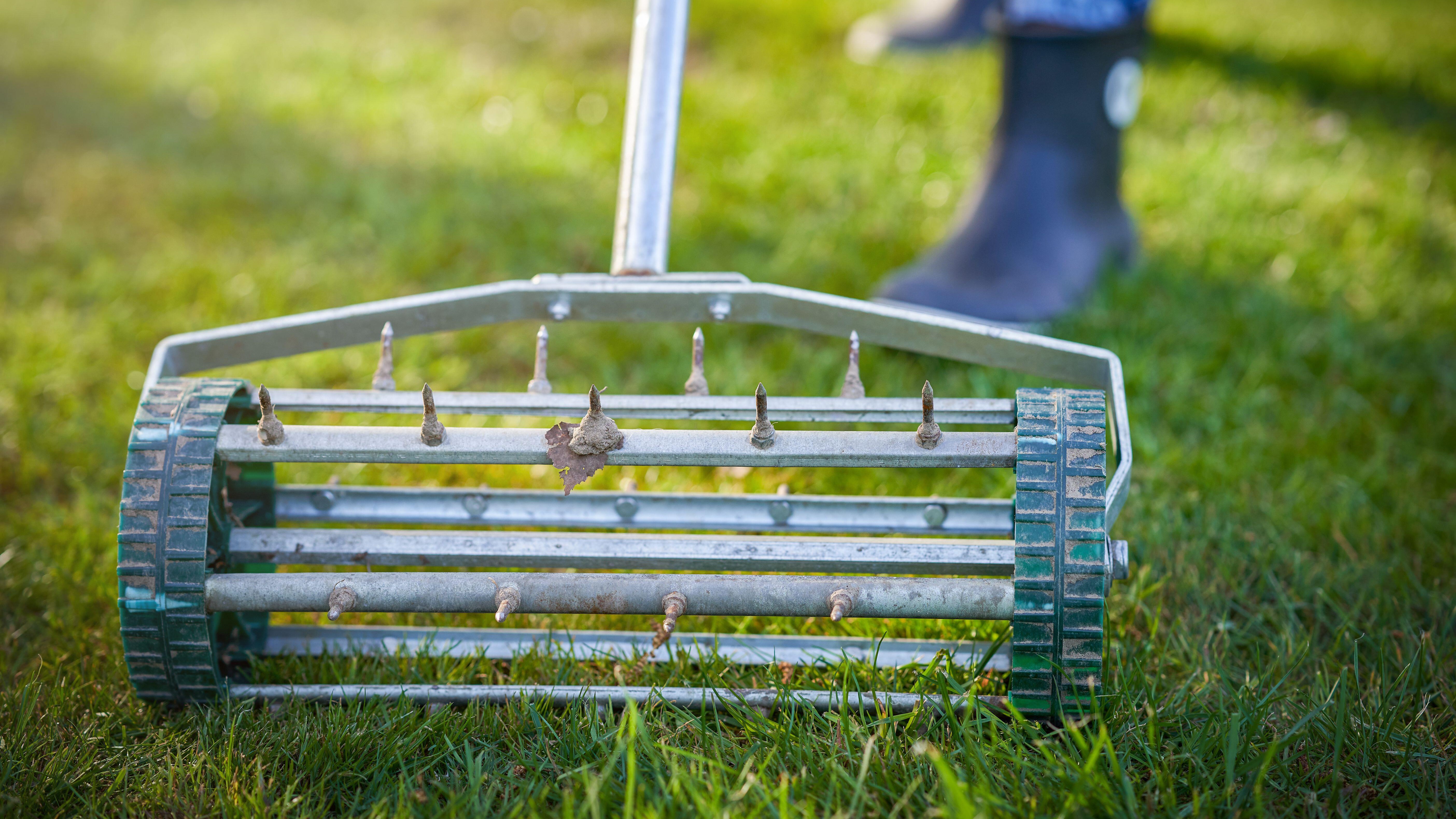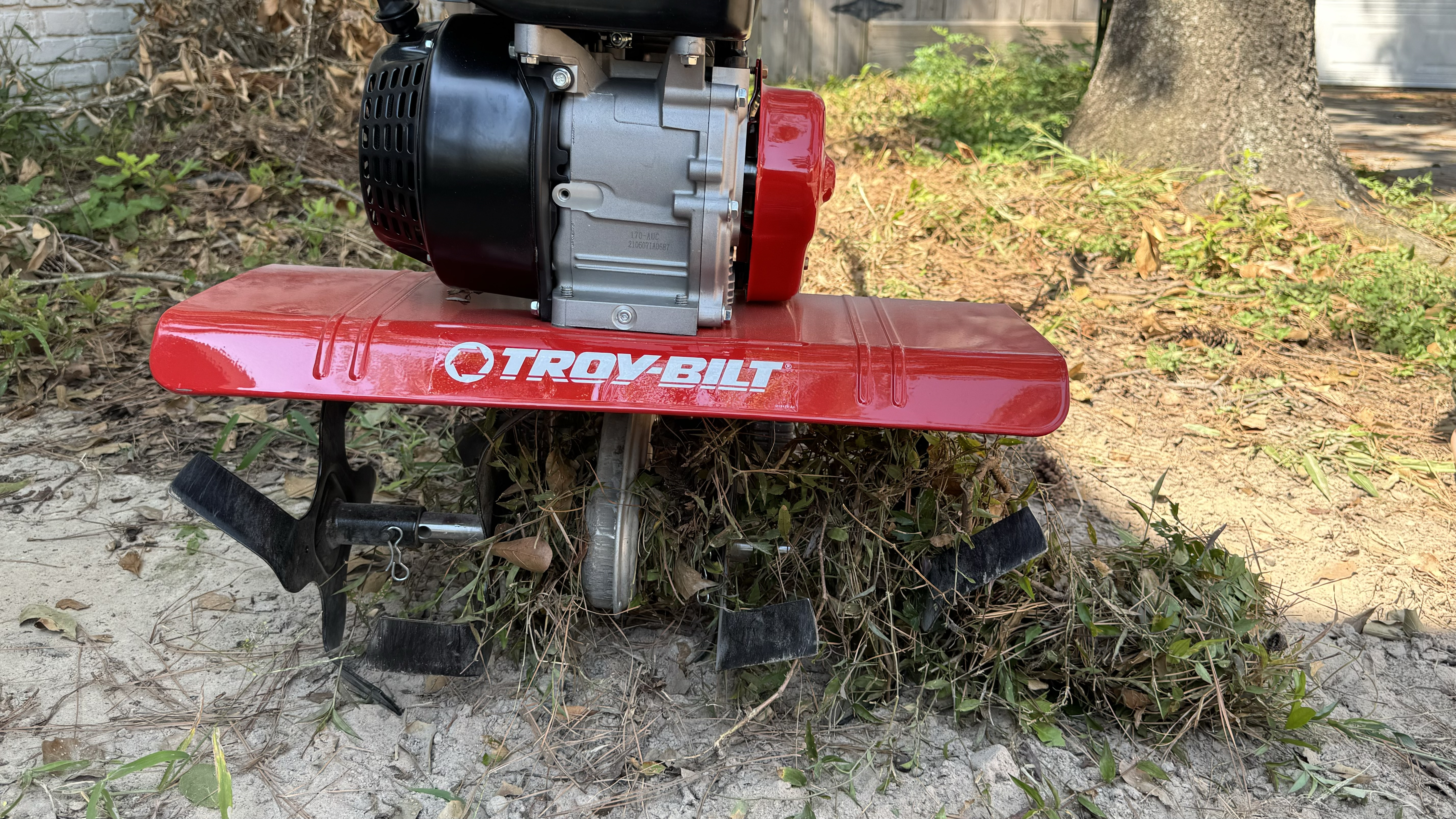If you want a lush green lawn then you might be wondering which gardening tool is best for the job: tiller or aerator?
Firstly, let's establish what each gadget does... What is a lawn aerator? Lawn specialist Chrissie Handley, from Online Turf, told Top Ten Reviews: “Aerators are specifically designed to create holes in your lawn so that drainage and airflow can be improved. Aerators generally leave minimal damage to your existing lawn and tillers to rotovate the soil entirely."
The aerating process can be done manually by hand (or by foot using shoe spikes), with a pitchfork or spading fork, or with tow-along tools that you attach to garden machinery.
The best tillers on the other hand are bigger and meatier, and make light work of deep digging and breaking up hard earth.
Handley adds: “A tiller is definitely more powerful than an aerator as it needs the power to be able to churn the soil from the ground, whereas the aerator only needs enough power to make holes in your lawn, albeit sometimes quite deeply.”
So now we know what each gardening tool does, which one is best for you? I'll take you through the key differences in price and value, features and performance. I've also spoken to some gardening industry pros for thier expert insight.
Tiller vs aerator: price & value
- Aerators are slightly cheaper than tillers.
- When it comes to value, tillers are better for breaking new ground or dealing with tough and/or neglected soil, but aeratoes are more effective for long-term soil health.
When comparing costs, tillers tend to be pricier, says Valeria Nyman, chief product officer at Taim.io. She told Top Ten Reviews: "Price-wise, tillers range from roughly about $100 for a cheap electric one to over $3,000 for a gas-powered beast that can chew through clay like it’s cake.
"Aerators, you can get a manual one for, say, $40 or a high-end gas-powered core aerator for $2,000+ but that probably goes a bit over the top for these purposes."
Chrissie Handley, Lawn Care Specialist at Online Turf agrees with Nyman: “As the two tools are for different uses, they do differ in price – tillers tend to be more expensive as they’re designed for a larger job - you can also get a variation of handheld or electric which will vary in price depending on the type of job you’re looking to do.
“Aerators can come quite cheap, especially manual ones, as the job they do is more minimal than a tiller. You can still get aerators for a higher price if you’re looking at mechanical large ones for big areas, however.”
When it comes to value for money, Nyman says this depends. "If you’re breaking new ground or dealing with tough and/or neglected soil, a tiller is worth the money - once. But if you care about long-term soil health, I reckon an aerator will serve you better."
Tammy Sons, founder and CEO of TN Nursery, adds: “The value depends on your needs, because tillers excel at preparing hardened ground to make a garden, and aerators are better for removing weeds and such in lawns.
"Overall, the differences are that tillers deal with deep soil turning, while aerators help with reducing compaction of the ground and improve root health in already-established lawns.
Tiller vs aerator: Features & functions
- Tillers dig deeper but some require muscle to maneuver.
- Aerators are more gentle on soil.
Nyman says when it comes to features and functions, tillers have rotating blades (known as tines) that dig deep, sometimes up to 10 inches.
She says: "Some are self-propelled; some need muscle. Aerators either spike or core - pulling little plugs of soil out - improving air and water flow without disturbing soil life.
"The more powerful the aerator, the deeper it penetrates, some even hit three inches. That’s basically the difference between tickling the surface and actually making an impact."
Tiller vs aerator: Performance
- Tillers are more powerful and can handle thicker soil than an aerator can.
- Aerators are less forceful and good for maintaining healthy turf.
Aerators work by using hollow tines to extract small cores or 'plugs' from the grass as the machine rolls across the lawn. The holes in the grass help to aerate the soil allowing more air, water and nutrients to penetrate down deeper into the roots.
This promotes stronger grass growth, cuts down on weeds and bald spots and helps to lead to a lusher, more vibrant lawn.
Aerating will also help to avoid soil compaction (which is when grass has heavy footfall or environmental pressure). You don't want this to happen to your lawn because it prevents proper circulation getting into the roots and this can mean weaker, thinner grass.
It's also a great way to reduce thatch buildup. If you have thick thatch (an inch or more) then this can block the flow of water and fertilizer getting into grass roots, which in turn can dehydrate and malnourish the lawn. If this sounds familiar, it's time to read our guide for how to dethatch your lawn.
A tiller is a tool used to not only aerate but to break up and churn the soil over. They’re usually used to loosen the soil ready for planting. Tillers are essential tools for soil preparation, weed control, and general garden maintenance.
Nyman told Top Ten Reviews: "When it comes to performance, a tiller gives you more muscle. It smashes and breaks. An aerator is finesse, it works with the soil, not against it. If you need brute strength, I'd go tiller. If you want long-term soil health, I'd go aerator."
The differences in the effort required is noticeable however, says Scott Seargeant, an award-winning landscape contractor and international arborist.
He says: "A tiller is much harder to operate than an aerator, especially if you have uneven or hard ground. I recommend watering the soil several hours to a day before tilling if the ground is dry or hard. Aerating a lawn 24 hours after a normal watering cycle."
Sons says: "When it comes to performance, tillers are more powerful and can handle soil that's way more dense than what an aerator can handle. Aerators are less forceful, but are able to be used to maintain healthy turf."
Handley says: “Tillers I’d say are a better tool overall as they do both jobs in one, by rotovating the soil you also aerate at the same time, so you won’t need to also buy an aerator."
Tiller vs aerator: Maintenance
- Both tillers and aerators are relatively easy to clean and maintain.
When it comes to cleaning and maintenance, Sergeant says that you can clean both with a garden hose or power washer.
He says: "Remove all dirt and debris. Check the tines on the tiller and replace as needed when they wear down. Check the coring devises on the aerator for nicks or plugged cores. Rocks can get lodged into cores.
"Clean out any core devises that are plugged or have debris. Some tillers or aerators may need to be greased. Check your owner’s manual."
Handley told Top Ten Reviews: "Keep the moving parts lubricated and store your tiller somewhere dry. Manual ones last forever if you don’t leave them to rust. Gas-powered ones are lower maintenance than tillers overall."
Sons adds: “Both should be dried properly and oiled to ensure no rust build up happens before being stored in a dry shed or garden closet.”

Tiller vs aerator: which is better?
Both tillers and aerators are efficient garden tools to help promote a healthy lawn.
Nyman says: "A tiller is a brute-force kind of tool - t churns up soil, breaks apart compacted earth, and mixes in organic matter like compost. There are different types: front-tine, rear-tine, and mini-tillers but they all really share one job. That is, turning soil into something plant roots can actually move through! Word of caution though: if used too much, they can wreak havoc on soil structure!
"An aerator is more of a precision tool. It doesn’t rip things apart; it pokes holes, allowing air, water, and nutrients to seep into compacted soil. It’s a good tool for keeping soil healthy without disturbing the delicate underground ecosystem."
Sons told Top Ten Reviews: "For those wanting to start a new garden, a tiller is best - and for those with an already-established lawn, an aertator can help you keep it healthy."
Always follow safety instructions and the guidelines by the manufacturers of both for the best results!
Your choice ultimately depends on your needs, budget, lawn condition and size. Nyman says: "If you’re starting from scratch, till. If you care about soil health, aerate. I lean toward aerators because I’ve seen too many gardens ruined by compulsive tilling."

Valeria Nyman is a lawn care specialist who has expertise in creating the perfect conditions to grow produce.She is also chief product officer at Taim.io, a platform that helps people grow their own food.

Chrissie Handley is a lawn care specialist working for Online Turf. With extensive expertise in turf-laying, grass maintenance and seasonal gardening advice, she is dedicated to helping gardening enthusiasts achieve lush, healthy lawns year-round.

Scott Seargeant is an award-winning landscape contractor and international arborist. Scott is a published author, writer, an award-winning photographer and film producer.

Tammy Sons is founder and CEO of TN Nursery. She is a plant expert who studied horticulture and has been active in the nursery industry for over 60 years.
Tilling vs aerating: FAQs
Is a tiller the same as a rotavator?
Yes, a tiller is also known as a rotavator and a cultivator.
What are the disadvantages of a tiller?
One of the draws of a tiller is how it can disrupt the soil. Over-tilling can wreck the soil structure, which can lead to poor lawn health over time.
Is a scarifier the same as an aerator?
The difference between scarification and aeration is that scarifiers remove moss and unwanted growth (such as moss) while lawn aerators create holes in the soil to allow air and nutrients in, promoting healthy grass growth.

